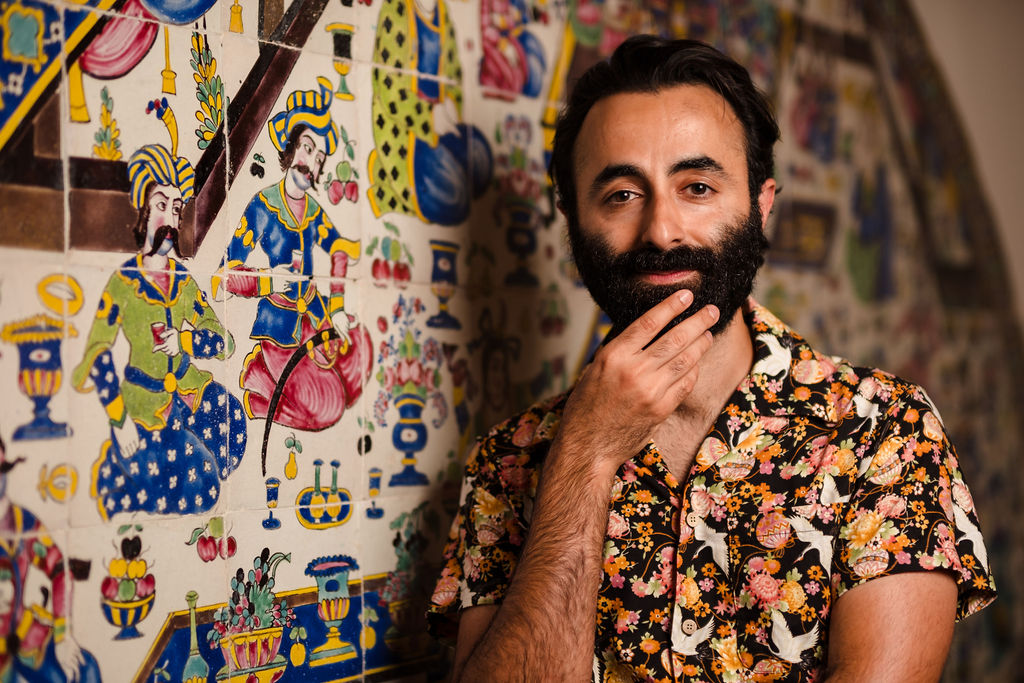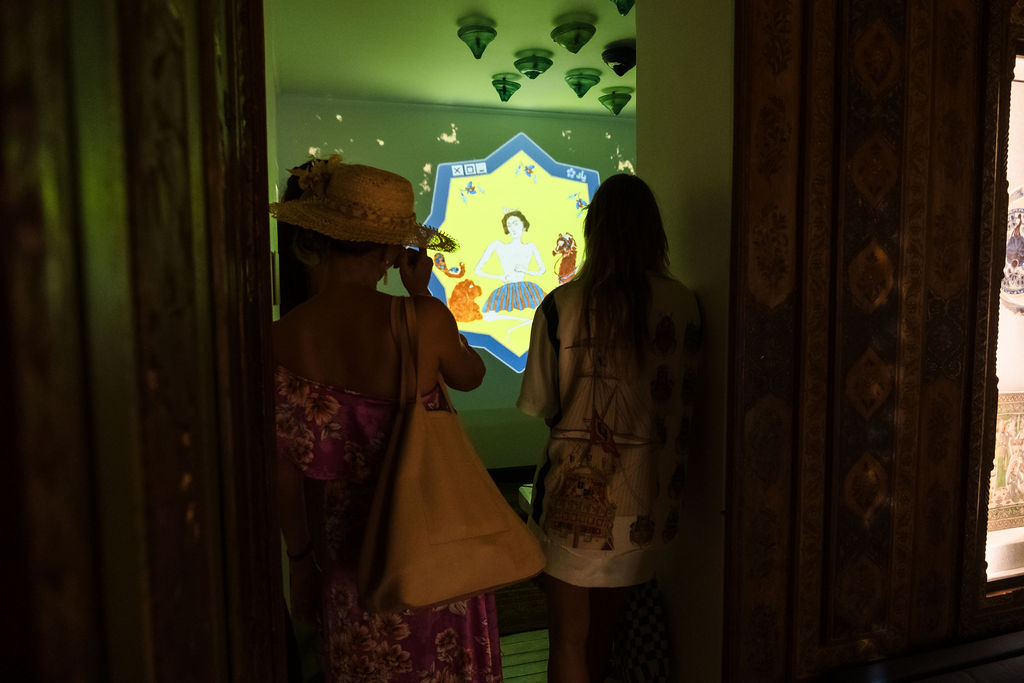6 Questions: Navid Sinaki, Shangri La Artist-in-Residence

Shangri La Artist-in-Residence, Navid Sinaki, shared with us some of his early memories of film, museums, and the inspiration behind his work for The Infinite Garden now on view at both Shangri La and the Honolulu Museum of Art until March 3, 2024.
What was your first memory of a museum?
My first museum trip was to the Norton Simon Museum in Pasadena, CA. It was the joke “everyone goes there” museum, a go-to high school field trip for many. At the end of the visit, a museum staff member always handed out a small print of a work from the collection. I lucked out and a memento of a painting by Modigliani. I felt one way about the work, and then the wall text added a whole heartbreaking layer. I loved that play of reorienting to a work based on the historical/biographical context. But I also loved whatever melancholy story I made up just by looking into those sad, elongated eyes.
As a video artist, what got you interested in film?
I was born in Iran, but I grew up in a Southern California suburb called Rancho Cucamonga. The go-to movie theater was in the local outlet mall. Going there was a panic attack obstacle course for someone with anxiety. I really fell in love with film by watching old movies on Turner Classic Movies. In the cable box days, if you didn’t have a TV Guide, you just didn’t know what you were watching. If you missed the title sequence, you just had to guess. I loved the films, but I also loved not knowing. I remember blurry moments from movies I still don’t know the name of. Sometimes I’m not sure if I made up some gauzy sequences, lovers around a maypole, pearls in a teacup, and so forth.
Was there an experience you had during your site visit that impacted how you developed your work for “The Infinite Garden”?
Seeing Doris Duke’s art collection was unreal. Hidden away is a treasure trove of historical art objects beyond my wildest dreams! Pages from painted manuscripts were a supreme delight, some from the Shahnameh (Book of Kings). In the presence of such greatness, I was nervous about a sneezing spree over all the great, meticulously crafted work.
Serendipity took over that day in the deep vaults, because the database with specific details about these works was down. I looked at such fascinating objects, but didn’t always know what I was looking at. Was an illustration from the love story of Leyli and Majnun? Was it a Ferdowsi-inspired scene? I couldn’t tell. Navid Najafi (my name twin/Associate Curator of Programs & Social Practice) sent snapshots of these manuscripts to his cousin to help us decipher the texts. To create the context, to invent it, was its own magic.
What were you most excited about as part of your Residency at Shangri La?
Some of the more fragile works in the Doris Duke collection, ones that sadly cannot be exhibited, have a sort of secret alter ego in my work… be it as a figure on a VHS label, or a short film about a lover accidentally eating another. After many conversations and .gif exchanges with Kristin Remington, Associate Curator of User Experience (UX), I’m excited to share the stories and ephemera from this invented epic tale. And the Qajar paintings finally have their audience!

What four words summarize the themes you explore in your artwork?
Memory, mythology, storytelling, and deception
You also have a book coming out? What’s it about and when can we start reading it?!
Yay! Knock on wood, but I’m excited to have this other precious work join the waking world. My novel Medusa of the Roses will be out in August 2024, published by Grove Atlantic. Steeped in Persian mythology, it tells the noir-tinged story of queer lovers in Iran, where homosexuality is punishable by death. One goes missing just as the couple decides to finally leave their hometown.
